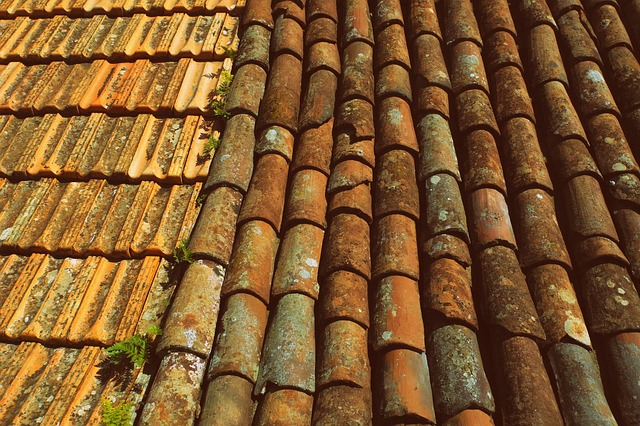Built-up roofing systems, a cost-effective and durable choice for flat commercial buildings, feature multi-ply layers including fabric membranes, bitumen, and gravel. A specialized built-up roofing company ensures proper installation and maintenance, extending the system's lifespan up to several decades. These systems offer superior insulation, leak protection, and weather resistance, making them a reliable long-term investment for business owners. Regular maintenance by experienced contractors is vital to address potential issues and ensure optimal performance.
Built-up roofing systems, a common sight on flat commercial structures, offer robust protection against the elements. This comprehensive guide explores these multi-layered systems, from their foundational components and construction methods to their distinct advantages for commercial properties. We delve into the expertise required when hiring a built-up roofing company, emphasizing maintenance practices for extended lifespan. Additionally, we address common challenges and provide troubleshooting solutions, empowering property managers to ensure optimal performance from their built-up roofs.
- Understanding Built-Up Roofing Systems
- Layers of Protection: Materials & Construction
- Advantages for Commercial Buildings
- Expertise Needed: Choosing a Built-Up Roofing Company
- Maintenance: Ensuring Longevity & Performance
- Common Challenges & Troubleshooting Solutions
Understanding Built-Up Roofing Systems

Built-up roofing systems are a common sight on flat commercial buildings, offering a durable and cost-effective solution for businesses. These multi-ply roofs are created by layering multiple components—including fabric membranes, bitumen, and gravel—to create a strong, weatherproof barrier. This method is particularly effective in regions with varying climates, as it provides insulation, protection against leaks, and the ability to withstand heavy loads.
A built-up roofing company specializes in designing, installing, and maintaining these intricate systems. They understand that each building has unique needs, so they tailor their services accordingly, ensuring a seamless fit for any commercial space. With proper care, these roofs can last for several decades, making them a reliable choice for business owners looking for long-term protection for their investments.
Layers of Protection: Materials & Construction

Built-up roofing systems offer a robust solution for flat commercial buildings, providing multiple layers of protection. These systems typically consist of a base layer of a waterproof membrane, such as bitumen roofing or EPDM (ethylene propylene diene monomer), which acts as a barrier against moisture intrusion. On top of this, a series of multi-ply roof layers are added, each contributing to the system’s strength and durability.
The construction involves layering gravel roof materials carefully, starting with a layer of hot liquid-applied bitumen, followed by a fleece or fabric reinforcement, and then additional plies of bitumen membrane. This process creates a strong, cohesive structure that can withstand extreme weather conditions. A built-up roofing company often uses specialized equipment to ensure precise application and adherence to industry standards, resulting in a long-lasting and reliable roof for commercial properties.
Advantages for Commercial Buildings

Built-up roofing systems, consisting of multiple layers including a strong fabric base and topped with a gravel roof, offer numerous advantages for commercial buildings. These multi-ply roofs are renowned for their exceptional durability and resistance to extreme weather conditions, making them a reliable choice for flat roofs. The process involves careful layering, where each layer adds strength and protection, ultimately providing a robust defense against potential leaks and damage.
Hiring a reputable built-up roofing company ensures that the installation is done correctly, leveraging the system’s benefits to the fullest. Bitumen roofing, a key component, acts as a natural sealant, enhancing water resistance. Moreover, gravel roofs not only add aesthetic value but also provide additional insulation, contributing to energy efficiency and temperature regulation inside the building. This multi-layered design makes it an ideal solution for commercial properties seeking both robust protection and long-term cost savings.
Expertise Needed: Choosing a Built-Up Roofing Company

When considering a built-up roofing system for your commercial property, selecting the right built-up roofing company is paramount. This specialized type of roofing, often seen on flat roofs, involves multiple layers of materials including fabric, bitumen, and gravel, creating a robust and durable multi-ply roof. As such, it requires the expertise of professionals well-versed in this particular construction method.
Choosing a company with experience in bitumen roofing is crucial. The process demands precise application of bitumen, a key binding agent, as well as proper gravel placement for reinforcement. Inexperienced hands may lead to weaknesses in the structure, compromising its longevity. Look for contractors who specialize in built-up roofs and have a proven track record, ensuring your investment is protected with a sturdy gravel roof that stands the test of time.
Maintenance: Ensuring Longevity & Performance

Regular maintenance is key to extending the life of a built-up roofing system and ensuring optimal performance. Unlike sloped roofs, flat commercial buildings require specific care due to their unique design. A reputable built-up roofing company understands this and offers tailored maintenance plans. These include regular inspections to identify any signs of damage or weakness, prompt repairs to prevent small issues from becoming major problems, and the reapplication of coatings to protect the roof against environmental factors.
Proper maintenance involves more than just visual checks. It includes cleaning the roof surface and drainage systems, repairing or replacing missing or damaged granules in a gravel roof, and ensuring the integrity of the bitumen roofing layers. By implementing these practices, building owners can expect their multi-ply roofs to withstand harsh weather conditions, maintain structural integrity, and preserve the overall aesthetic appeal of their properties.
Common Challenges & Troubleshooting Solutions

Built-up roofing systems, while popular for flat commercial buildings due to their durability and cost-effectiveness, present several challenges that require careful management. One common issue is the potential for lapses in installation, leading to leaks over time. This can be attributed to poor alignment, inadequate flashing, or subpar sealing of joints. A trusted built-up roofing company should address these by implementing precise installation techniques, using high-quality materials for flashing and sealing, and conducting regular inspections to detect any issues early on.
Another challenge is the system’s sensitivity to environmental factors. Extreme weather conditions, such as heavy rainfall or intense sunlight, can impact the performance of a multi-ply roof. Bitumen roofing, a key component in these systems, may soften or harden under varying temperatures, affecting its flexibility and ability to seal effectively. Gravel roofs, while protective, require careful placement to prevent uneven weight distribution, which could lead to damage over time. Troubleshooting solutions involve regular maintenance, including reapplication of coatings or bitumen as needed, and ensuring proper ventilation to regulate temperature extremes.
